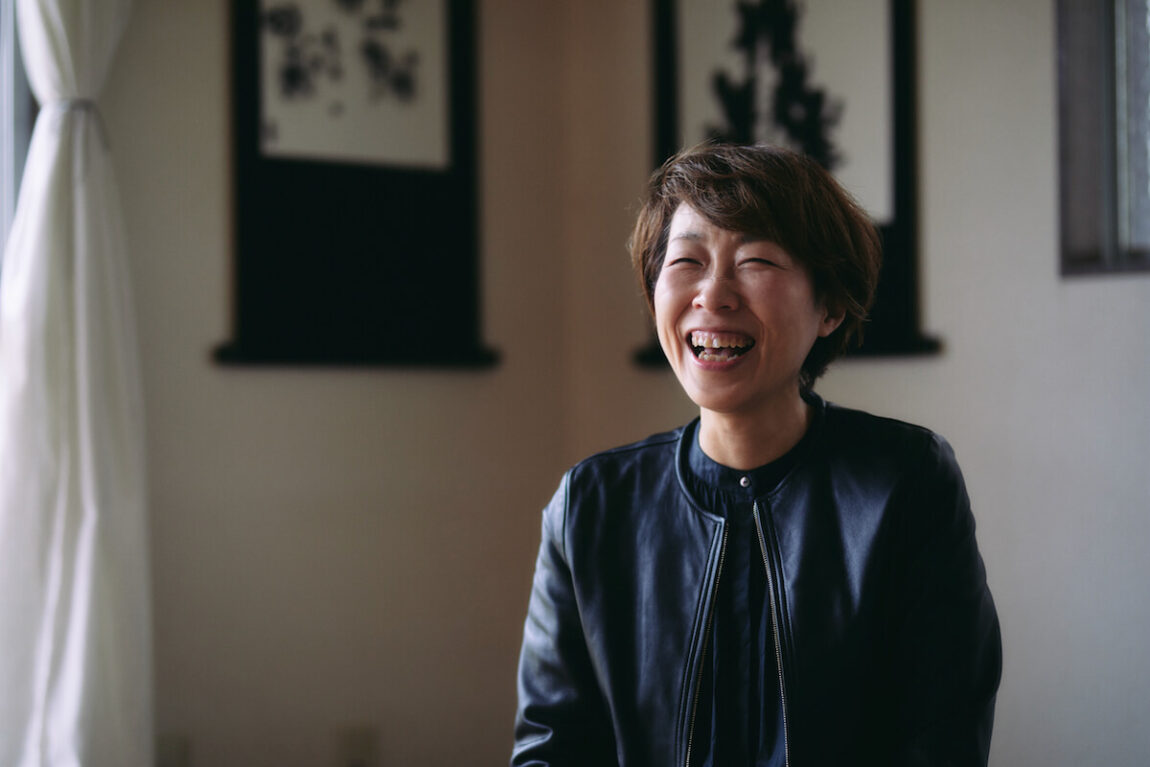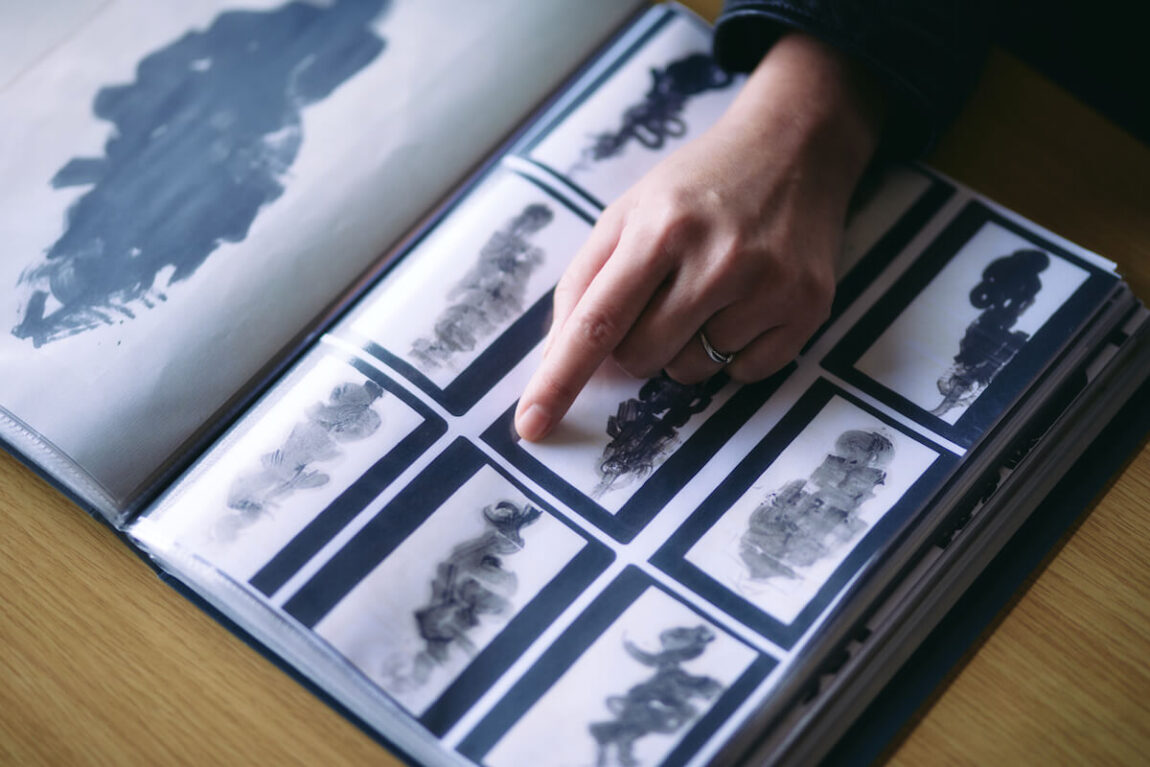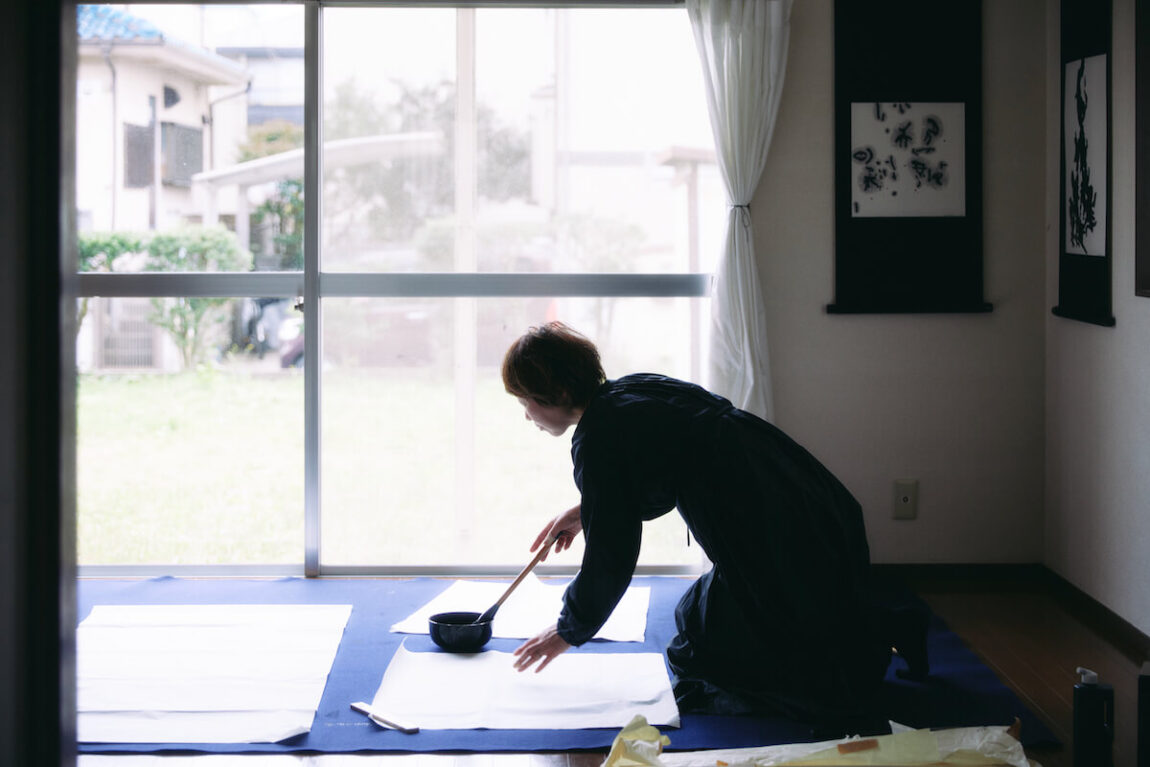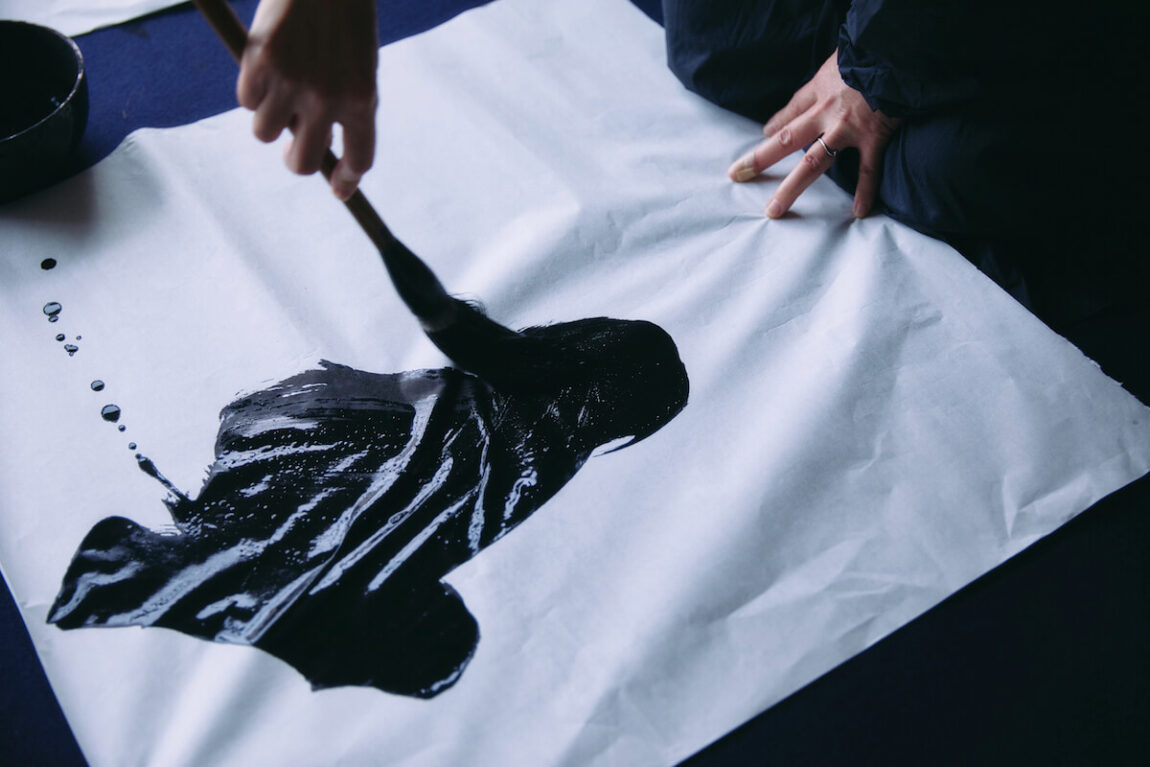Kumagai Unyen
I started calligraphy in elementary school and have been doing it ever since. I guess I liked writing. There was a period of time when I didn’t do calligraphy for about 10 years, but when I was invited to teach children, I started a calligraphy class. I also had an opportunity to teach at an elementary school.
While the skill of writing beautiful characters is important, I have always wanted to teach “expression”. For example, for the character “wind”. Is it a gentle spring breeze? Or is it the wind on a stormy day? I let my imagination run wild. I emphasize the importance of writing while facing oneself and exploring one’s inner thought, and giving expression.
Two years ago, I held a calligraphy exhibition in which I read a picture book titled “Hanasaki Yama”(The Mountain of Flowers) to children , then I asked them to write “flower” inside themselves. In this way, each person could find a different “flower”. The same character can be expressed in completely different ways. I would like to convey my wish that they will recognize diversity and express themselves while respecting themselves and others.

Through teaching calligraphy, I have come to think deeply about my own work and have become more creative. Now I am challenging myself to express myself in a new way with “calligraphy as contemporary art”. And, thanks to the opportunity, I will hold a solo exhibition next year.
Looking back, learning the ancient script of calligraphy nine years ago was a turning point for me. Until then, I had always thought that “calligraphy” meant writing characters that could be read. I was writing words that I liked or that were prepared as a subject. But when I tried to write about what lies behind the letters, I needed a concept for the work. I began to dig deeper and think about that. It became important for me to spend time thinking about why I write this and why I chose this expression.
And as I have been exposed to the world of contemporary art, I have been drawn to ancient calligraphy as a form of expression. My current work is calligraphy that has words written, but they do not look like letters.

This piece, for example, was written as “Yamato Nadeshiko.
I thought about how to express anti-war sentiments in my work in a profoundly Japanese way. I came up with the image of the Himeyuri Students who nursed Japanese soldiers during the Battle of Okinawa. That is how I came to associate Yamato Nadeshiko.

Rather than personal expression, I consider my works as an expression of my desire to let people know what I want to appeal to society and to think about it with me. I thought I could do something different with calligraphy, which I have been doing for many years, rather than just writing for my own liking and having people sympathize with me.

When I actually write, I think deeply about how to express the concept I have in mind, but the moment of writing is only once. I write the same words over and over again, valuing the improvisational nature that allows me to come up with something different each time I write. It is interesting to see how something unexpected comes out.
What is important is not whether it is beautiful or not, but whether it follows your message. That is the difference between a work of art or not. For example, something that can be read as letters often misses the mark. If it is something that can be understood as letters, the viewer stops thinking once he or she understands the meaning of the letters. That would be a waste. If people don’t know what the letters mean, I think they will take a good look at it and wonder what it means. What are they writing? Why did they write this? I am hoping that people will become aware of the message of the work and think about it more.
As a calligrapher, I am now interested in methods of expression that go beyond the framework of calligraphy, like using materials other than just paper and ink, and in three-dimensional works. I think I must be in a period of change.


-
Kumagai Unyen
Born in Tokyo in 1965, Kumagai started calligraphy at the age of 7.
Works as a calligrapher and contemporary artist based in Toride and Moriya City. She has held many workshops incorporating ancient characters at ARCUS Project, elementary schools, facilities for the disabled, and community organizations. While teaching children the importance of expression, focusing on the classics and the present, the past and the future, she has been sending out messages about social issues that need to be considered in the future.■Major Exhibitions
2013-2019 Member of CACA Contemporary Art Calligraphers Association, exhibited several works in Ginza, Omotesando, Yokohama, etc.
2016 “Art Calligraphy Experience”, WS ARCUS Project
2017 “Pamelan Wall Exhibition vol.1”, ARCUS PROJECT / “Calligraphy Art Experience 100 People Project”, WS ARCUS PROJECT
2018 “Freedom and Future of Calligraphy” in Moriya City
2019 “The Universe for Everyone Written in Ancient Scripts” in Tsukuba City
2020 “Jiboshin” at nap gallery / “150 Flowers” at Arts Chiyoda3331 / “3331 Oh-Tamatebako” at Arts Chiyoda
2022 “Tale of Insects, Birds and Fish” in Toride City / “Tokyo Shodo Week” in Mitaka City / “YOKOHAMA SHODO ART Fair” in Yokohama / “SHODO NEW AGE” (Eastern conference) in Ichikawa / “SHODO NEW AGE” (Western conference) in Kyoto / “Seeds of Happiness” in Moriya City / “The 23rd World Exhibition of Contemporary Art from France and Japan” in Roppongi, Tokyo” Abstract Expression by Calligraphers VI” in Ginza, Tokyo / “ART SHODO SELECTION in Tokyo” in Mitaka City